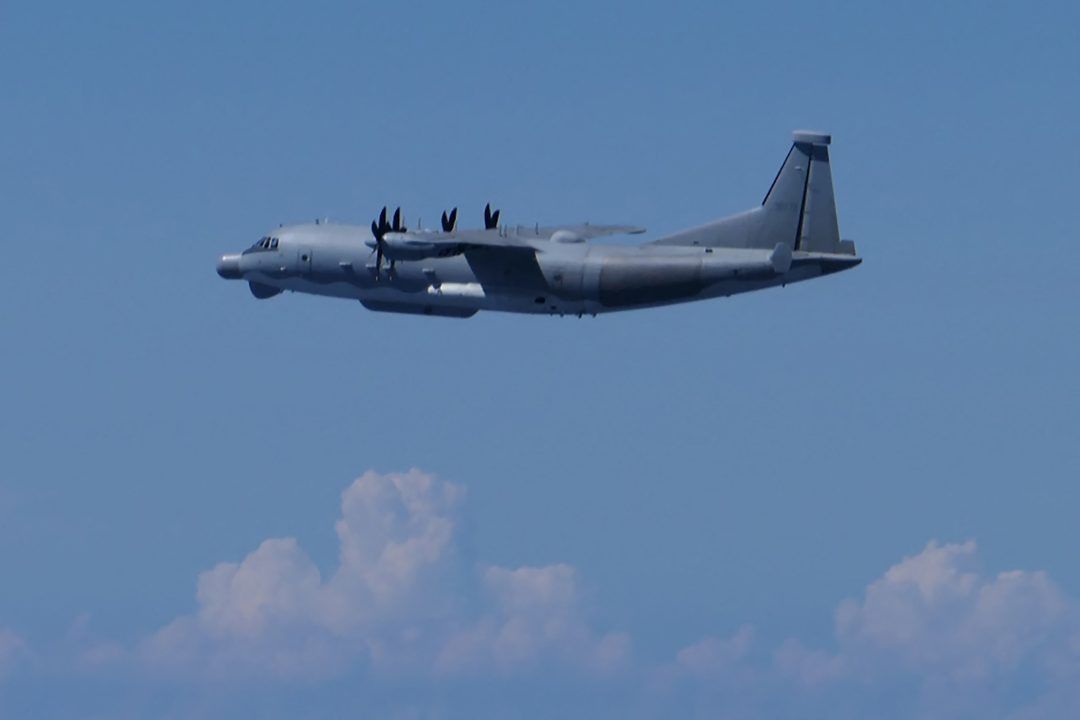- Home
- Middle East
- Japan Condemns Chinese Airspace Incursion

©This handout photo taken and released on August 26, 2024 by Japan's Ministry of Defense Joint Staff Office shows a Chinese military Y9 intelligence-gathering aircraft that Japan's defence ministry said "violated" Japanese airspace. (Handout / Japan's Ministry of Defense / AFP)
Japan slammed on Tuesday what it called the first confirmed incursion by a Chinese military aircraft into its airspace as a "serious violation" of its sovereignty, saying Beijing was becoming "increasingly active."
China's growing economic and military clout in the Asia-Pacific region and its assertiveness in territorial disputes has rattled the United States and its allies, and Monday's incident represents a further heightening of tensions.
Japan, Washington's closest ally in the region, said it scrambled fighter jets after the two-minute incursion from 11:29 AM (0229 GMT) on Monday by the Y-9 surveillance aircraft off the Danjo Islands in the East China Sea.
Analysts said China was possibly probing Japan's air defense network, seeking to obtain intelligence and putting pressure on Tokyo as it expands defense cooperation with the United States.
The uninhabited Danjo Islands are a group of small islets also located in the East China Sea off Japan's southern Nagasaki region, and are not disputed territory.
Japanese and Chinese vessels have been involved in tense incidents in other areas, in particular the remote Senkaku islands in the East China Sea claimed by Beijing, which calls them the Diaoyus.
Two non-military aircraft from China – a propeller-powered plane and a small drone – forayed into airspace near the Senkaku islands in 2012 and 2017, according to Japanese broadcaster NHK.
Japan, staunchly pacifist for decades, has ramped up defense spending with US encouragement, moving to acquire counter-strike capabilities and easing rules on arms exports.
Manila and Beijing have been involved in a series of confrontations, most recently in waters near the disputed Sabina Shoal in the South China Sea only 140 kilometers (90 miles) west of the Philippine island of Palawan.
Beijing claims the South China Sea almost in its entirety, despite an international court ruling that its assertion has no legal basis.
China deploys boats to patrol the busy South China Sea and has built artificial islands that it has militarized to reinforce its claims.
Yee Kuang Heng, a professor at the University of Tokyo, said the Y-9 in Monday's incident "was likely probing Japan's air defense network, collecting electronic intel such as Japan's radar signals and coverage."
Natsuke Fukue, with AFP
China's growing economic and military clout in the Asia-Pacific region and its assertiveness in territorial disputes has rattled the United States and its allies, and Monday's incident represents a further heightening of tensions.
Japan, Washington's closest ally in the region, said it scrambled fighter jets after the two-minute incursion from 11:29 AM (0229 GMT) on Monday by the Y-9 surveillance aircraft off the Danjo Islands in the East China Sea.
Analysts said China was possibly probing Japan's air defense network, seeking to obtain intelligence and putting pressure on Tokyo as it expands defense cooperation with the United States.
Confrontations
The uninhabited Danjo Islands are a group of small islets also located in the East China Sea off Japan's southern Nagasaki region, and are not disputed territory.
Japanese and Chinese vessels have been involved in tense incidents in other areas, in particular the remote Senkaku islands in the East China Sea claimed by Beijing, which calls them the Diaoyus.
Two non-military aircraft from China – a propeller-powered plane and a small drone – forayed into airspace near the Senkaku islands in 2012 and 2017, according to Japanese broadcaster NHK.
'Counter-Strike'
Japan, staunchly pacifist for decades, has ramped up defense spending with US encouragement, moving to acquire counter-strike capabilities and easing rules on arms exports.
Manila and Beijing have been involved in a series of confrontations, most recently in waters near the disputed Sabina Shoal in the South China Sea only 140 kilometers (90 miles) west of the Philippine island of Palawan.
Beijing claims the South China Sea almost in its entirety, despite an international court ruling that its assertion has no legal basis.
China deploys boats to patrol the busy South China Sea and has built artificial islands that it has militarized to reinforce its claims.
Yee Kuang Heng, a professor at the University of Tokyo, said the Y-9 in Monday's incident "was likely probing Japan's air defense network, collecting electronic intel such as Japan's radar signals and coverage."
Natsuke Fukue, with AFP
Read more



Comments